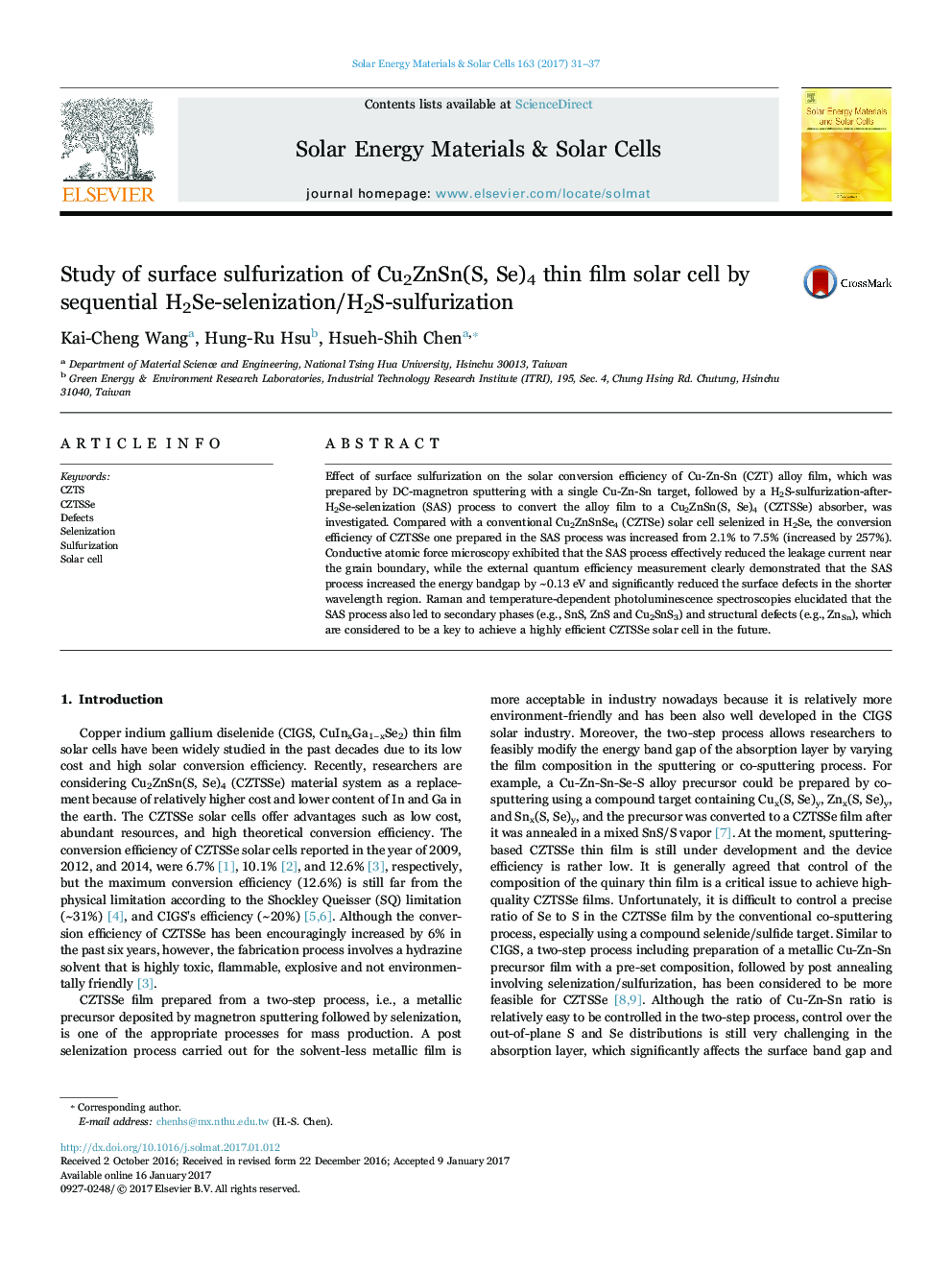| کد مقاله | کد نشریه | سال انتشار | مقاله انگلیسی | نسخه تمام متن |
|---|---|---|---|---|
| 6457159 | 1420660 | 2017 | 7 صفحه PDF | دانلود رایگان |

- Effect of the surface sulfurization on Cu2ZnSn(S, Se)4 (CZTSSe) thin film solar cell prepared by DC-magnetron sputtering with a single metallic target and treated by a sequential H2Se-selenization/H2S-sulfurization (SAS) process is investigated in this study.
- By introducing the SAS process, the device open circuit voltage, the short current density, and the fill factor have been significantly improved by ~44%, ~46%, and ~69%, respectively, which increased the conversion efï¬ciency by ~257% for the CZTSSe solar cell (from 2.1% to 7.5%).
- Conductive atomic force microscopy (C-AFM) exhibited that the SAS process effectively reduced the leakage current near the grain boundary, while the external quantum efficiency (EQE) measurement clearly demonstrated that the SAS process increased the energy bandgap by ~0.13Â eV and significantly decreased the surface defects in the shorter wavelength region.
- Raman and temperature-dependent photoluminescence spectroscopies elucidated that the SAS process also led to secondary phases (e.g., SnS, ZnS and Cu2SnS3) and structural defects (e.g., ZnSn), which are considered to the key to achieve a highly efficient CZTSSe solar cell in the future.
Effect of surface sulfurization on the solar conversion efficiency of Cu-Zn-Sn (CZT) alloy film, which was prepared by DC-magnetron sputtering with a single Cu-Zn-Sn target, followed by a H2S-sulfurization-after-H2Se-selenization (SAS) process to convert the alloy film to a Cu2ZnSn(S, Se)4 (CZTSSe) absorber, was investigated. Compared with a conventional Cu2ZnSnSe4 (CZTSe) solar cell selenized in H2Se, the conversion efficiency of CZTSSe one prepared in the SAS process was increased from 2.1% to 7.5% (increased by 257%). Conductive atomic force microscopy exhibited that the SAS process effectively reduced the leakage current near the grain boundary, while the external quantum efficiency measurement clearly demonstrated that the SAS process increased the energy bandgap by ~0.13Â eV and significantly reduced the surface defects in the shorter wavelength region. Raman and temperature-dependent photoluminescence spectroscopies elucidated that the SAS process also led to secondary phases (e.g., SnS, ZnS and Cu2SnS3) and structural defects (e.g., ZnSn), which are considered to be a key to achieve a highly efficient CZTSSe solar cell in the future.
387
Journal: Solar Energy Materials and Solar Cells - Volume 163, April 2017, Pages 31-37